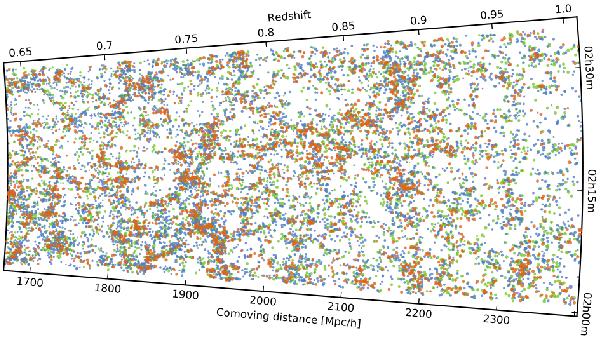Fig. 16

Zoom on the galaxy distribution within the VIPERS W1 field, where now the additional dimension of galaxy rest-frame colours has been added. Galaxies are here marked in blue, green or reddish, depending on whether their U − B rest-frame colour is respectively <0.9, between 0.9 and 1.2, or >1.2. Also in this case the size of the dots has been set proportionally to the B-band luminosity of the corresponding galaxy. The plot shows clearly that the colour–density relation for galaxies is already in place at these redshifts (Cucciati et al. 2006), with red early-type galaxies tracing the backbone of structure and blue/green star-forming objects filling the more peripheral lower-density regions. This picture gives an example of the potential of VIPERS for studying the clustering of galaxies as a function of galaxy properties, over scales ranging from less than a Mpc to well above 100 Mpc.
Current usage metrics show cumulative count of Article Views (full-text article views including HTML views, PDF and ePub downloads, according to the available data) and Abstracts Views on Vision4Press platform.
Data correspond to usage on the plateform after 2015. The current usage metrics is available 48-96 hours after online publication and is updated daily on week days.
Initial download of the metrics may take a while.


